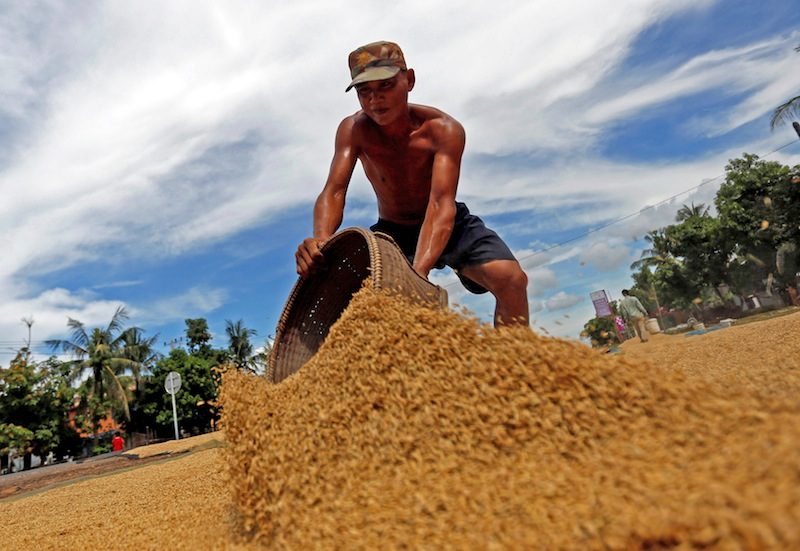The government’s injection of funds into the rice sector and call for officials and wealthy friends to purchase paddy has put the domestic market back into motion after a sudden plunge in prices, according to the Rural Development Bank (RDB).
Paddy prices crashed from about $250 dollars per ton in mid-August to $192 earlier this month, causing farmers to struggle to sell their crops at a profit—if they could sell at all.

Prime Minister Hun Sen responded by pouring $27 million into rice mills to subsidize payments to farmers. He then requested that government officials and businesspeople purchase and personally dry rice to make room in mills for more.
“The milled rice has been delivered as per local orders after the head of the government appealed when some buyers just wanted to keep it at the rice mills,” said Kao Thach, CEO of the RDB, which contributed $7 million in subsidies.
“Rice mills have continued buying paddy from farmers and selling out at the same time,” he said. “This transaction allows them to be able to store and dry paddy.”
Mr. Tach said about 7,000 tons of paddy had been purchased by mills across the country since the government released the $27 million grant, while 2,700 tons of milled rice had been sold in the same period.
“There is no issue,” he said.
Ser Lalen, general manager of Hakser Rice Mill in Kompong Cham province, said he had seen a drastic increase in sales since the government’s campaign began about a week ago. Because of this, sales for this month and last month increased by 30 percent compared to last year, to 45 tons of milled rice.
He said the government stimulus had driven the increase.
“As we have support from the market, we decided to buy much more paddy from farmers,” he said, explaining that the mill’s intake had doubled from 50 tons during this period last year to 100 tons this year.
But according to Sam Arth Veasna, vice president at Federation of Cambodia Farmer Organizations for Development, many farmers have still been left out.
“The government has spoken out about the falling paddy price, but I see that implementers—rice mills, traders—do not listen,” he said, adding that farmers in Battambang province were still being offered well below normal prices despite blocking a highway in protest last week.
“It has not been effective,” he said.
With the peak rice harvest coming in October and November, Mr. Arth Veasna said any success over the past week should be taken lightly.
“I am worried that if rice mills do not have money to buy rice paddy in the first phase, what about the second one?” he said. “How much bigger will the money problem become?”